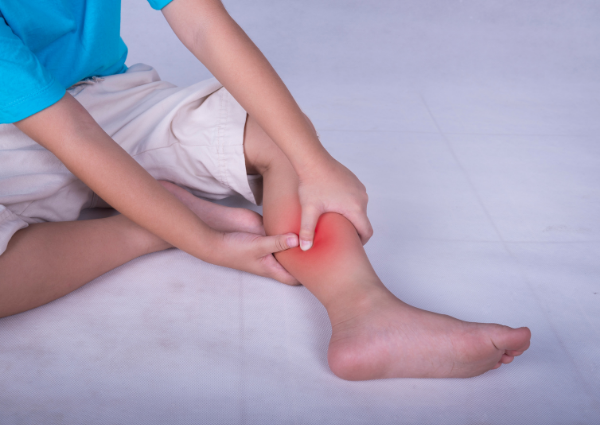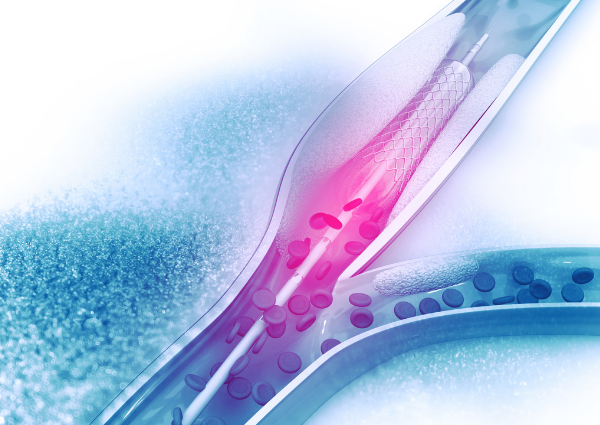Arterial Blockages

Do you suffer from chronic leg pain? Have you found no relief for your aching lower back? Do you feel sudden chest pains? You might not be aware of it, but chronic pain, even those you experience in your legs and back, can be a sign of a clogged-up artery!
Arterial blockages, also known as Atherosclerosis, happen when there is a build-up of fatty deposits and fibrous material on the walls of the artery. Although usually occurring in the heart, neck, and brain, the peripheral arteries such as those in your legs can get blocked as well.
If left untreated, this arterial disease can progress to symptoms such as chest pain or lead to life-threatening heart diseases and conditions such as heart attack or stroke.
WHAT IS PERIPHERAL ARTERY DISEASE (PAD)?
Peripheral artery disease (PAD) occurs when a substance called plaque builds up in the blood vessels that carry blood to the legs, resulting in reduced oxygen-rich blood. The reduced blood flow causes numbness, pain, or infection in the feet and legs.
Similarly, coronary artery disease occurs when plaque builds up in the coronary arteries, which transport blood to the heart.
Our Procedures for Arterial Conditions
WHAT CAUSES A BLOCKED ARTERY?
Atherosclerosis develops when arteries become narrow and get blocked due to plaque buildup. This plaque is made up of different substances, such as calcium, fat, cholesterol, and fibrin. In response to plaque buildup, the cells in your artery walls also multiply and secrete additional substances that can worsen the state of the clogged arteries.
Experts are unsure as to what ultimately causes atherosclerosis, but the following are considered its risk factors:
- High-fat diet. This leads to high cholesterol. Consuming foods high in “bad” cholesterol (saturated fats) and low in “good” cholesterol (Omega-3 fatty acids) are major contributors to plaque formation.
- High blood pressure. Elevated blood pressure can increase the rate at which arterial plaque builds up, leading to the hardening or clogging of arteries.
- Studies show that cigarette smoking increases the risk of developing atherosclerosis, especially in the arteries of the heart, legs, and aorta.
- High blood sugar levels. Diabetes also increases one’s likelihood of developing atherosclerosis.
- Other risk factors such as stress, sedentary lifestyle, obesity, and a family history of PAD or coronary heart disease.
These factors clog the blood vessel wall, which increases your chances of PAD. Risk factors frequently occur in pairs, and one may set off another. Obesity, for example, can result in high blood pressure and type 2 diabetes. When certain risk factors are combined, you’re more likely to get clogged arteries.
[Read: When to Get Treatment for Blocked Arteries in Legs (Peripheral Artery Disease)]
WHAT ARE THE SYMPTOMS ASSOCIATED WITH PERIPHERAL ARTERY DISEASE?

Unfortunately, many patients suffering from PAD will not notice any symptoms. Patients who do experience symptoms deal with claudication – tired, cramping, or heavy legs when exercising or walking. However, these symptoms often disappear when physical activity stops.
Claudication is different for each individual. The most severe cases make it almost impossible for the patient to participate in any type of physical activity.
Other symptoms of PAD include:
- Weakness or numbness in the legs
- Cramps in the hips, calf muscles, or thighs
- A change in the color of your legs
- Prolonged soreness on your feet, toes, or legs
- Slower growth of toenails
- Loss of hair on legs and feet
- Cramping or pain in the arms
Those with extreme pain may find that it affects their sleep.
A few of the symptoms people face when dealing with coronary artery disease include shortness of breath, dizziness, heart palpitations, chest pain (angina), and sweating.
[Read: The Difference Between Peripheral Artery Disease vs Peripheral Vascular Disease]
WHAT HAPPENS WHEN YOU HAVE A CLOGGED ARTERY?
Peripheral artery disease happens if atherosclerosis affects your legs or lower extremities.
However, the plaques clogging up your arteries can also restrict blood flow to the heart muscle by physically narrowing the artery or by causing abnormal artery tone and function. Without an adequate blood supply, the heart becomes starved of oxygen-rich blood and the vital nutrients it needs to work properly. This is called coronary artery disease, the leading cause of death in the USA.
The American Heart Association (AHA) estimates that someone in the US has a heart attack about every 40 seconds. In addition, for patients with no risk factors for coronary artery disease, the lifetime risk of having heart disease is 3.6% for men and less than 1% for women.
Latest News On Pain Management and Vein Health
HOW DO YOU KNOW IF YOU HAVE CLOGGED ARTERIES?
Clogged arteries or atherosclerosis don’t often show signs until discomforting symptoms such as pain or cramping happen. Some people experience pain in their lower back and legs, which can be a tell-tale sign of peripheral arterial blockage. Unfortunately for others, the first time they realize that they have atherosclerosis is when they have an event such as a stroke or a heart attack.
At VISP, a few tests that can be used to diagnose clogged arteries include:
- Ankle-brachial index (ABI): Comparing the blood pressure in your ankle to the blood pressure in your arm is a standard test. Your doctor at VISP takes your blood pressure with a standard sphygmomanometer and uses advanced ultrasound imaging tools to assess blood flow and pressure and find arterial blockages.
- A physical exam: During this exam, we will look for indicators of PAD such as high blood pressure, unnatural sounds in your arteries, a weak pulse near a narrowed artery, and wound indications in places with restricted blood flow.
- Blood tests: We take a blood sample to measure triglycerides and cholesterol levels and look for any signs of diabetes.
- Angiography: The doctor will be able to see your blood vessels using an x-ray imaging test. Angiography is a technique for examining blocked, narrow, enlarged, or deformed arteries in the heart, brain, limbs, and abdomen.
[Read: How Do You Cure Aching Legs? Answers From 5 Doctors]
WHAT ARE THE POTENTIAL CONSEQUENCES OF ATHEROSCLEROSIS?
Blocked arteries can stay silent for many decades. However, once the plaque narrows the arteries significantly and insufficient blood passes through, symptoms such as pain and discomfort may happen. This can happen either in the chest (angina) due to a lack of blood getting to the heart or in the calves (claudication).
The most dangerous outcome of atherosclerosis occurs if the plaque ruptures (breaks down). The blood flowing over the top of the plaque can clot, causing a blockage in the artery that can result in a heart attack, or it can be carried downstream causing a stroke.
PROCEDURES AND TREATMENTS FOR BLOCKED ARTERIES
ANGIOGRAM
An angiogram is performed in the Cath Lab as an outpatient procedure. It is done to assess the degree of artery narrowing. Here at VISP, we specialize in peripheral angiograms to detect PVD or PAD.
During the angiogram, our vein specialist inserts a thin tube (catheter) into the artery through a small nick in the skin about the size of a pencil tip. The contrast, also known as x-ray dye, is injected through the catheter to make the blood vessels visible on the live, real-time x-ray.
Learn more about the Angiography Procedure
PROCEDURES TO IMPROVE BLOOD FLOW
Our doctors perform angiograms to see if there is a blockage or narrowing in a blood vessel that may interfere with normal blood flow. Generally, a blocked artery can be treated at the same time the angiogram is performed. There are several methods our doctor may do during the following treatments to treat the blockages:

- Angioplasty – a small balloon is inserted into the clogged artery. Once placed, it is inflated to open or widen the obstructed artery to increase blood flow.
- Stent Placement – a stent is a small metal tube that is inserted into the artery to support an opened passageway for blood to flow.
Learn more about angioplasty stent
- Atherectomy – is the removal of the plaque from the artery walls to help increase unrestricted blood flow.
More About Our Procedures for Arterial Conditions
While treating coronary artery disease and PAD via medical procedures is extremely effective, it is also essential that patients make the necessary healthy lifestyle changes. When it comes to mild PAD, there are also certain prescribed medications your doctor can give you to reverse the symptoms.
EFFECTIVE DIAGNOSIS & TREATMENTS FOR ARTERIAL BLOCKAGES

Don’t let a clogged artery become a chronic discomfort that can lead to life-threatening conditions. Our expert doctors here at Vascular and Interventional Specialists of Prescott have years of experience and extensive training to perform these special procedures. Trust us as your pain specialists to assess and address your symptoms to help you find the lasting relief you deserve.
